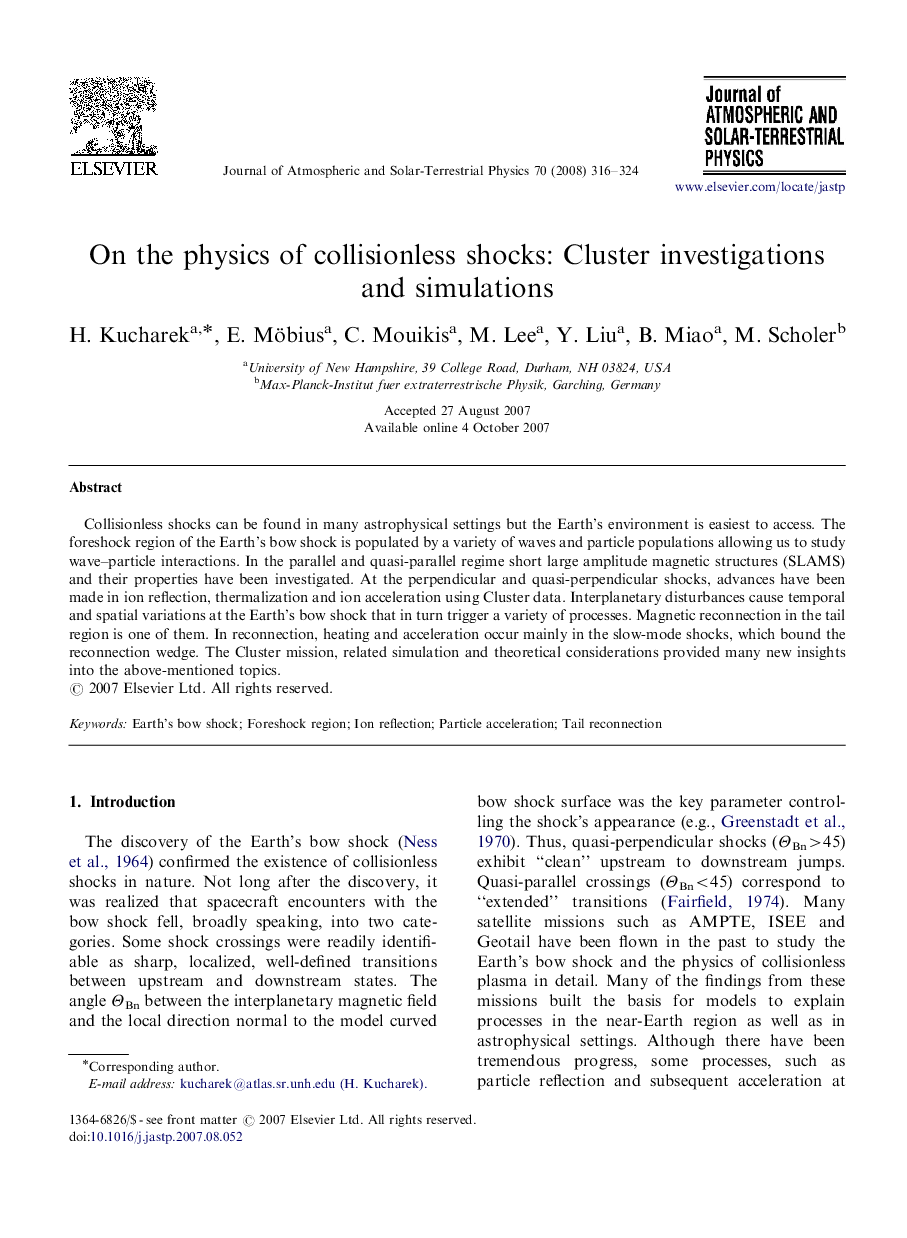| Article ID | Journal | Published Year | Pages | File Type |
|---|---|---|---|---|
| 1778153 | Journal of Atmospheric and Solar-Terrestrial Physics | 2008 | 9 Pages |
Abstract
Collisionless shocks can be found in many astrophysical settings but the Earth's environment is easiest to access. The foreshock region of the Earth's bow shock is populated by a variety of waves and particle populations allowing us to study wave-particle interactions. In the parallel and quasi-parallel regime short large amplitude magnetic structures (SLAMS) and their properties have been investigated. At the perpendicular and quasi-perpendicular shocks, advances have been made in ion reflection, thermalization and ion acceleration using Cluster data. Interplanetary disturbances cause temporal and spatial variations at the Earth's bow shock that in turn trigger a variety of processes. Magnetic reconnection in the tail region is one of them. In reconnection, heating and acceleration occur mainly in the slow-mode shocks, which bound the reconnection wedge. The Cluster mission, related simulation and theoretical considerations provided many new insights into the above-mentioned topics.
Related Topics
Physical Sciences and Engineering
Earth and Planetary Sciences
Geophysics
Authors
H. Kucharek, E. Möbius, C. Mouikis, M. Lee, Y. Liu, B. Miao, M. Scholer,
